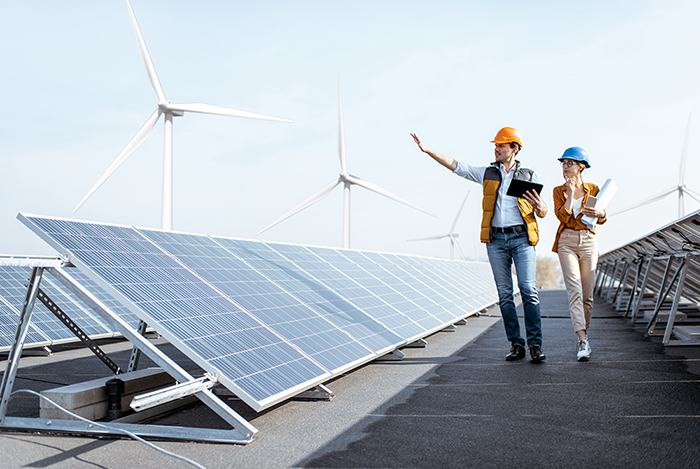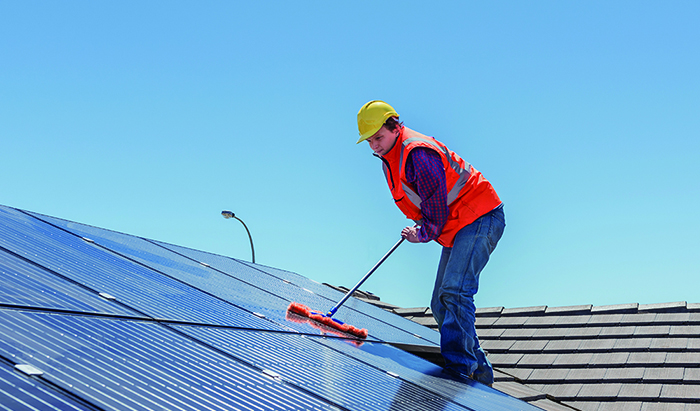Amid the global energy transition and the pursuit of carbon neutrality, commercial and industrial (C&I) photovoltaic (PV) development is experiencing unprecedented growth. As a key type of distributed PV, C&I solar projects not only help businesses reduce energy costs but also significantly cut carbon emissions, supporting green development. However, developing a PV project involves numerous steps and complex procedures.
Preparation Phase
1. Market Research and Project Planning
Market Research: Businesses should first conduct thorough market research to understand local PV policies, solar resources, grid connection conditions, and market demand. This helps evaluate the project’s feasibility and economic benefits, providing a solid foundation for decision-making.
Project Planning: Based on the research, businesses should draft a detailed project plan, including site selection, installation capacity, technical solutions, investment budget, and expected returns. It's crucial to prioritize sites with large rooftop areas, good sunlight exposure, and stable power consumption.

2. Rooftop Resource Evaluation and Negotiation
Rooftop Resource Evaluation: Businesses must assess potential rooftops for suitability, considering factors such as area, load-bearing capacity, lifespan, orientation, and obstructions. These elements directly impact the PV system's capacity and energy efficiency.
Negotiation and Contract Signing: Once the rooftop is deemed suitable, negotiations with the rooftop owner are required to define the partnership model and mutual benefits. Options may include leasing the rooftop or co-developing the project. A formal contract should be signed after successful negotiations to clarify details and responsibilities.
3. Fundraising and Team Formation
Funding Preparation: Businesses need to secure sufficient funding based on the project plan and budget, from sources such as internal funds, bank loans, or external investors.
Team Formation: A professional project team should be assembled, comprising experts in project management, technical design, installation, and operations. The team’s expertise is crucial to ensuring smooth project execution and stable operation.
Permitting Phase
1. Project Filing
Filing Application: Filing is the first step in developing a PV project. Businesses must submit a project filing application to the local Development and Reform Commission or Energy Bureau, including documents such as a project proposal, technical plan, investment plan, and rooftop lease agreement.
Review and Approval: The Commission or Bureau will review the application and issue a filing certificate, which is necessary for further permitting procedures.
2. Land Use and Planning Permission
Land Use Permission: After site selection, businesses must apply for land use permission from local authorities to ensure the project complies with land-use regulations.
Planning Permission: Concurrently, a planning permit from urban or rural planning authorities is needed to ensure the project aligns with local development plans.
3. Environmental Impact Assessment (EIA) and Approval
EIA: As per environmental regulations, an Environmental Impact Assessment is required. Businesses must hire a qualified firm to prepare the EIA report, which assesses the project’s potential environmental impact and proposes mitigation measures.
Approval: The EIA report is then submitted to environmental authorities for review, and approval must be granted before construction begins.
4. Power Grid Access and Interconnection
Grid Access Application: Since solar power generation needs to be connected to the grid, businesses must apply for grid access and interconnection permits from power authorities.
Signing of Interconnection Agreement: After the application is approved, businesses sign an interconnection agreement with the power company, defining responsibilities for grid connection.
5. Construction and Safety Permits
Construction Permit: Before starting construction, businesses must apply for a construction permit from the relevant authorities, submitting documents such as the project filing certificate and construction contracts.
Safety Permit: A safety permit from the safety supervision department is also required, which involves submitting safety management plans and emergency procedures for approval.
Construction Phase
1. Equipment Procurement and Installation
Procurement: Businesses should procure PV modules, inverters, and mounting structures from reputable suppliers, ensuring high quality and performance.
Installation: The installation must adhere to safety standards and guidelines to ensure the quality and progress of the project. Particular attention should be paid to the proper orientation and tilt of the PV modules to maximize solar energy utilization.
2. System Commissioning and Grid Acceptance
Commissioning: After installation, the system should be tested for output power, inverter efficiency, and grid stability to ensure it operates as designed.
Grid Acceptance: Once testing is complete, businesses must apply for grid acceptance. The power company will review the system and issue a certificate of compliance, enabling the project to officially start generating electricity.
Operations and Management Phase
1. Maintenance and Cleaning
Maintenance: Routine maintenance is required to ensure the smooth operation of the PV plant. This includes inspections, troubleshooting, and performance monitoring.

Cleaning: Regular cleaning of the PV modules is necessary to prevent dust and dirt buildup, which can reduce energy efficiency and affect the lifespan of the system.
2. Data Analysis and Performance Evaluation
Data Monitoring: Real-time data monitoring allows businesses to track the system’s performance and identify potential issues, enabling quick responses and optimized maintenance strategies.
Performance Evaluation: Regular assessments of electricity generation, revenue, and subsidy claims are important to determine the economic benefits of the project.
3. Policy Updates and System Upgrades
Policy Updates: As renewable energy policies evolve, businesses should stay informed about changes in subsidies and incentives to adjust their strategies accordingly.
System Upgrades: With ongoing advancements in PV technology, businesses should consider upgrading their systems to improve efficiency and reduce maintenance costs.
Conclusion
Developing a C&I PV project is a complex and lengthy process, involving market research, project planning, permitting, construction, and long-term operations. Businesses must be well-versed in policies, focus on project quality, and ensure the economic viability of the project for sustainable success. Keeping up with new technologies and products will also support system upgrades, driving the green transformation and contributing to sustainable development.







